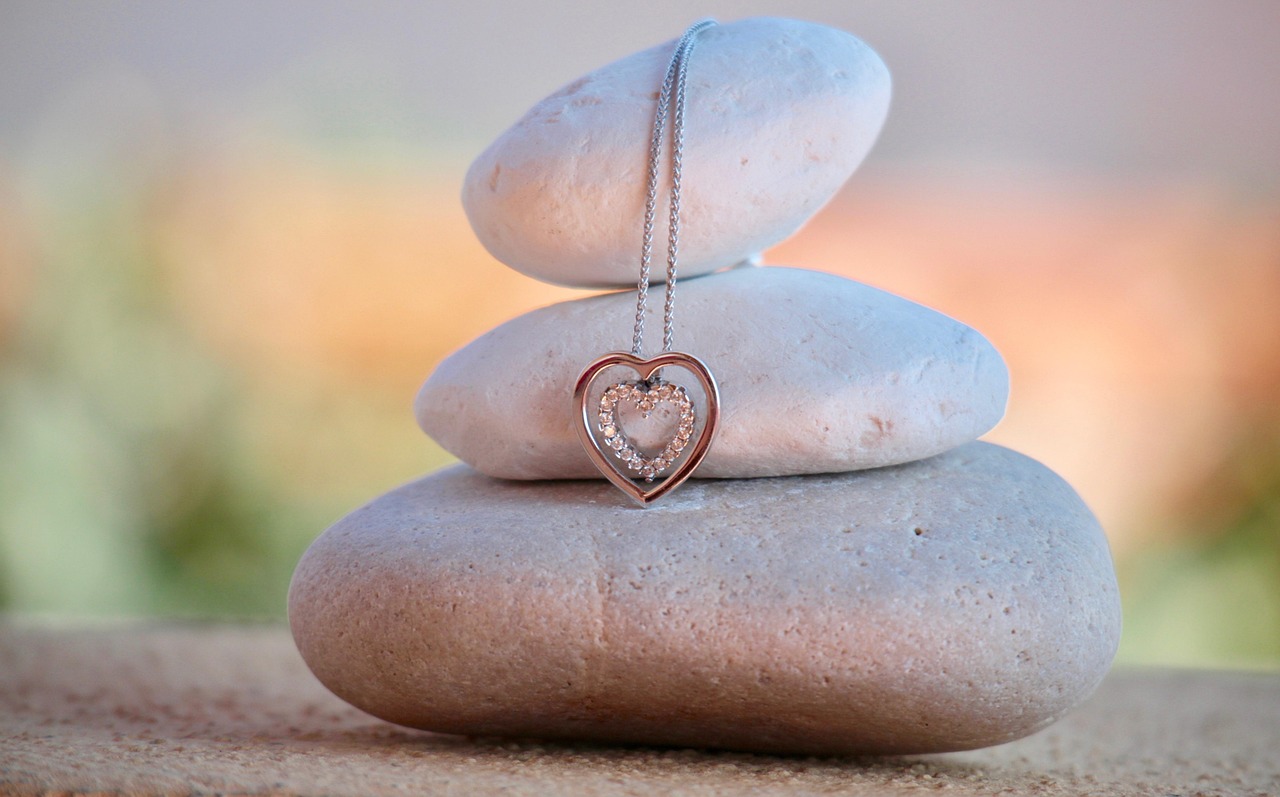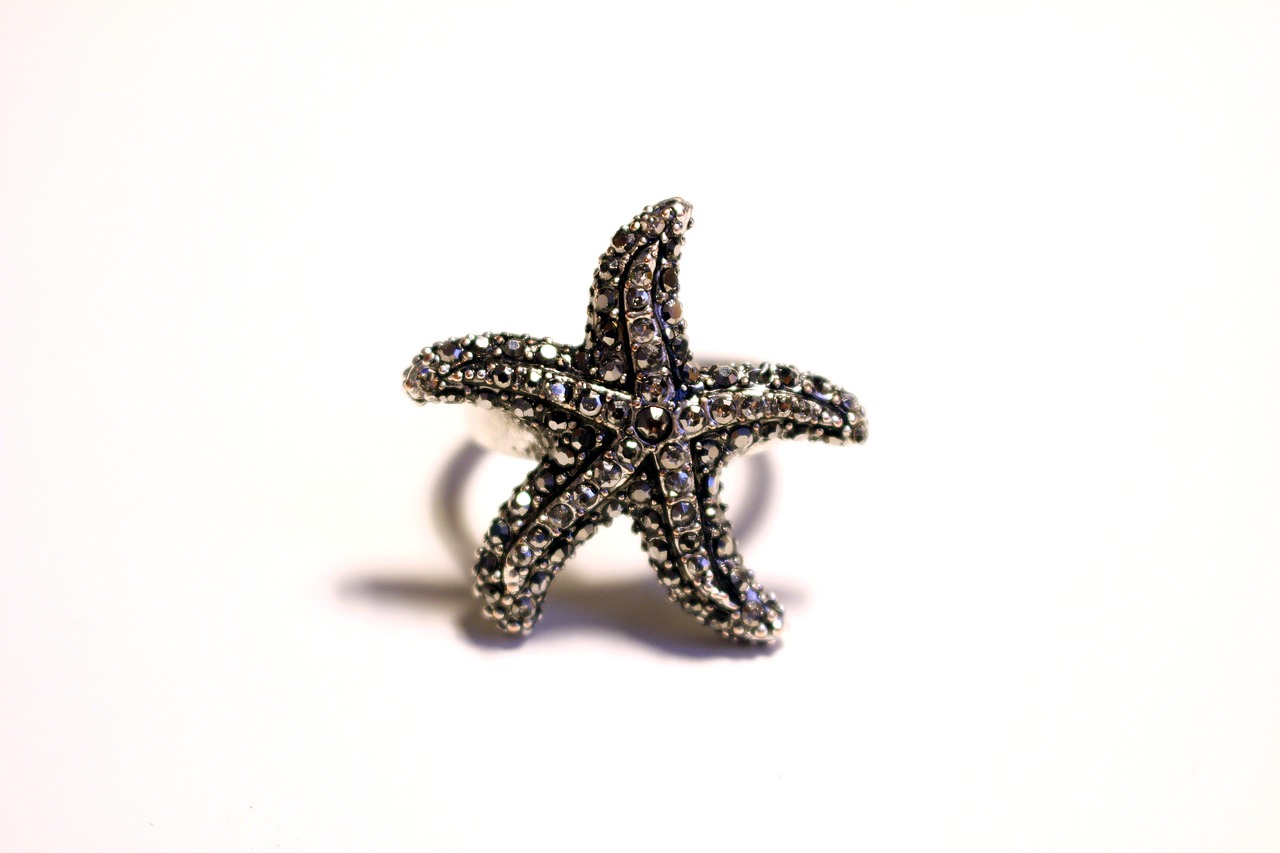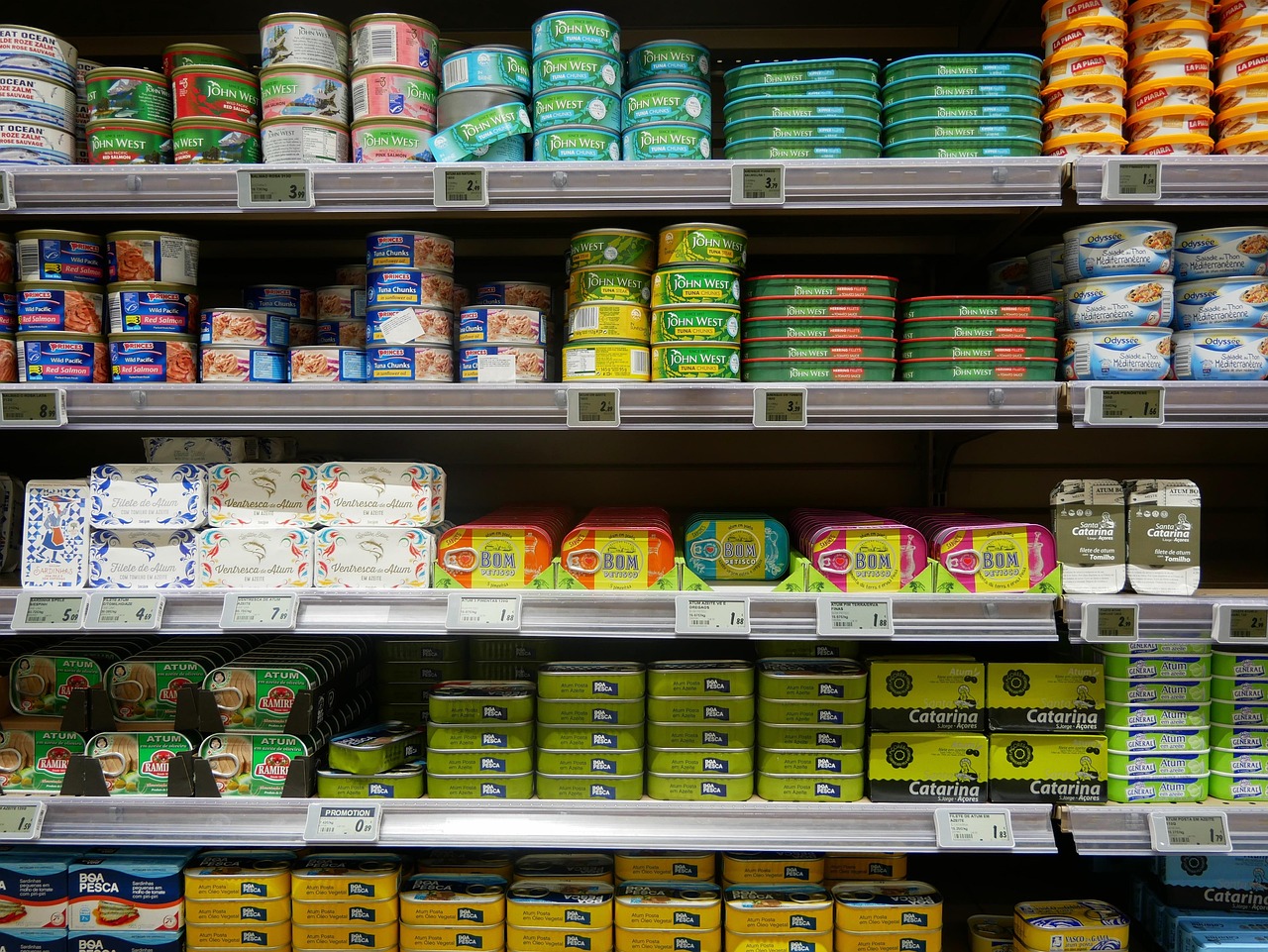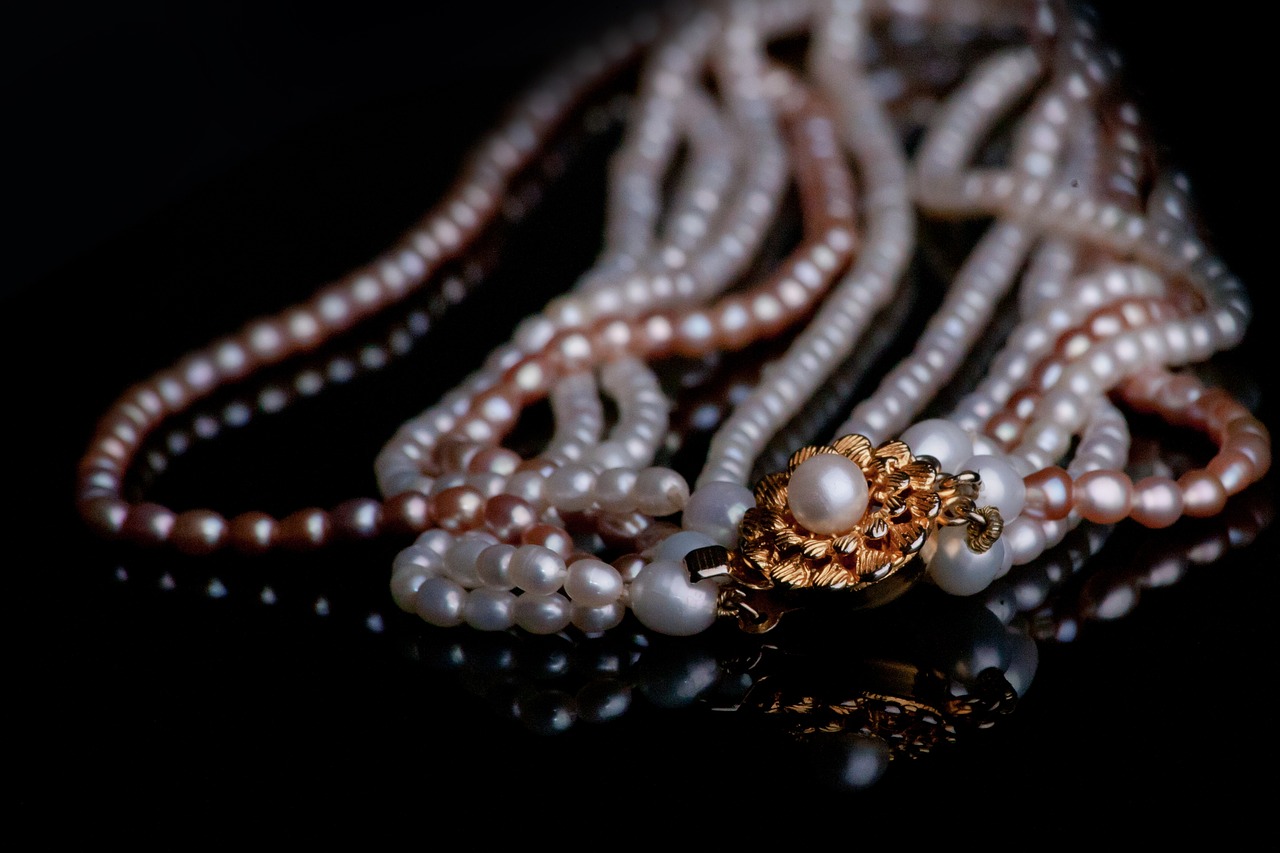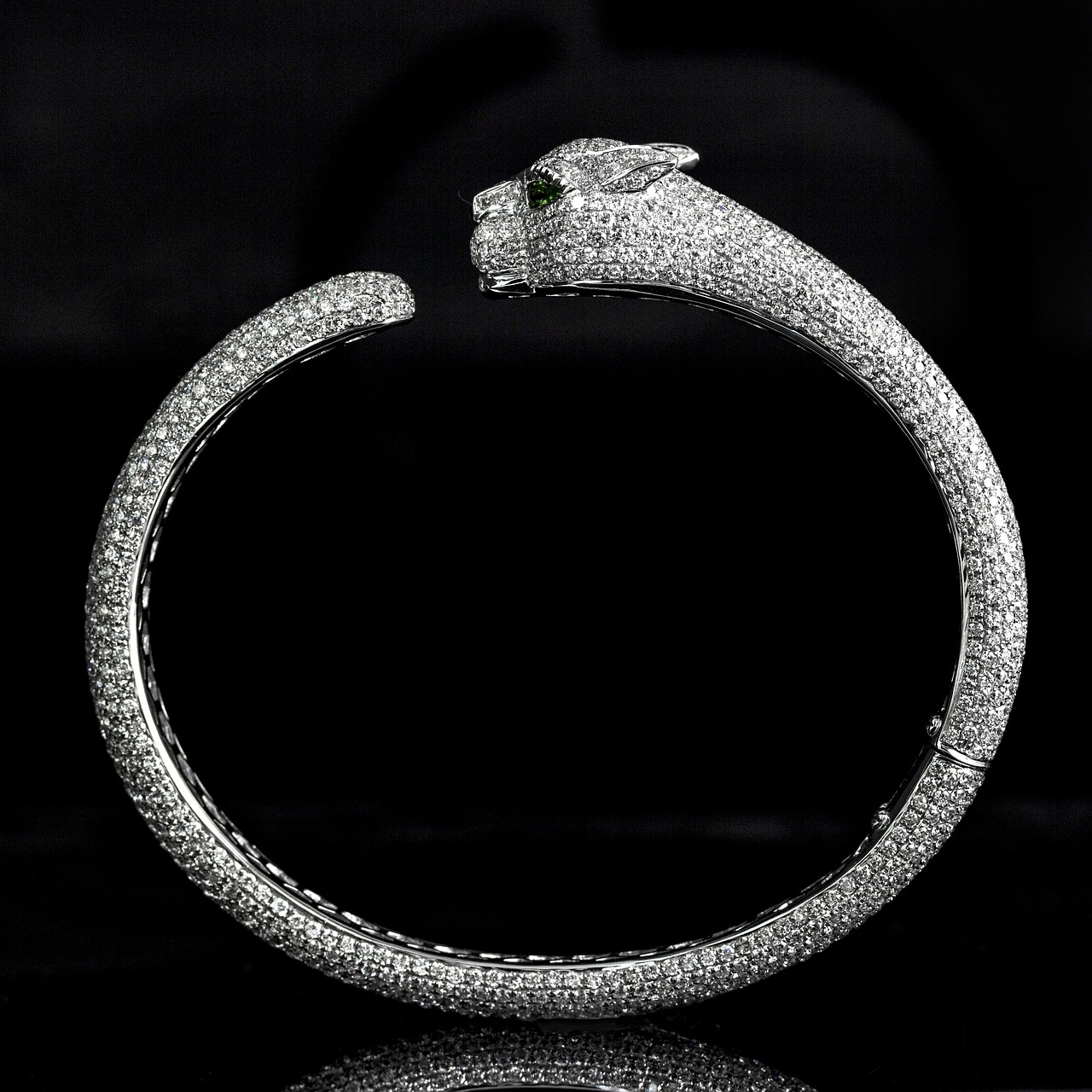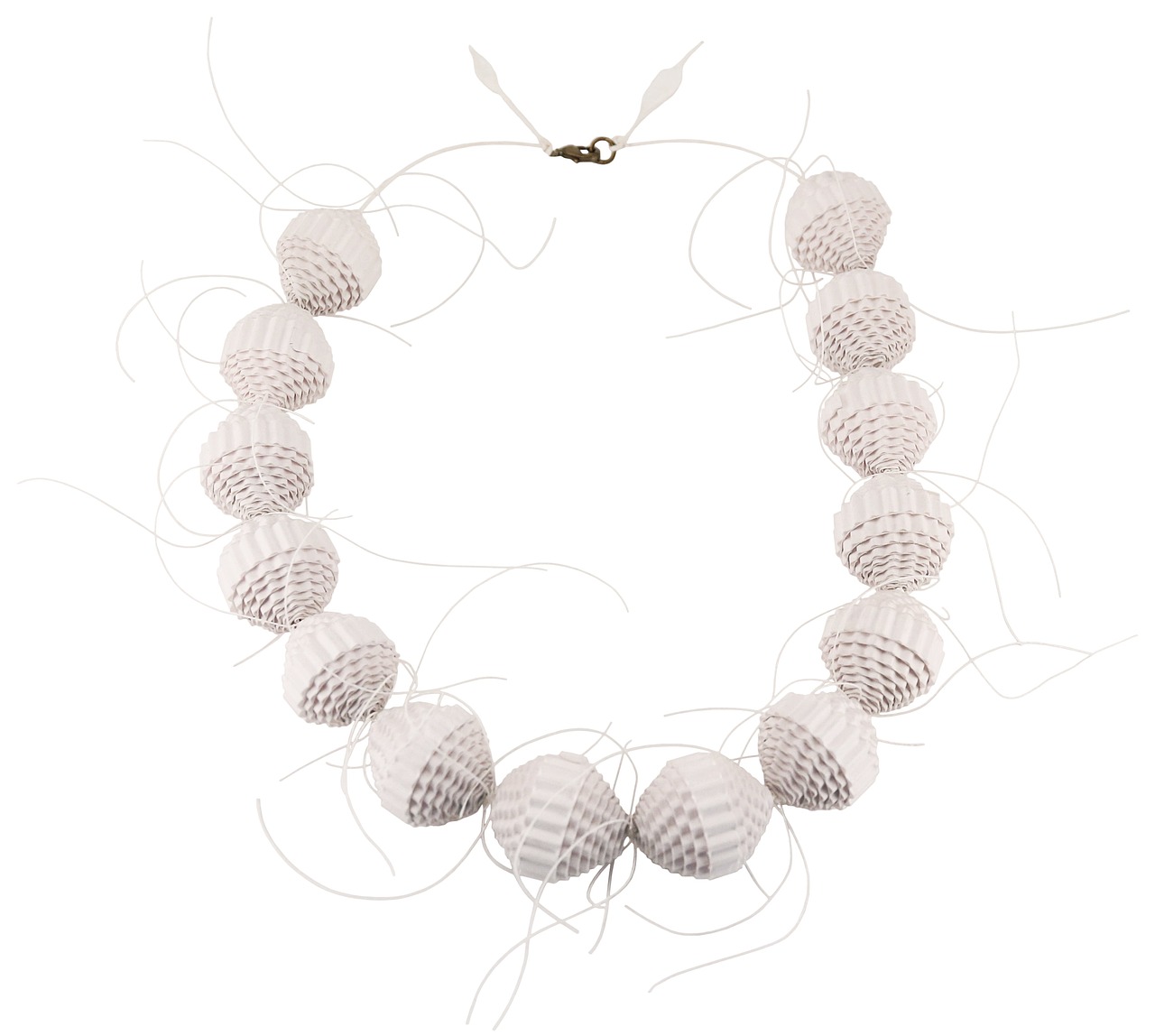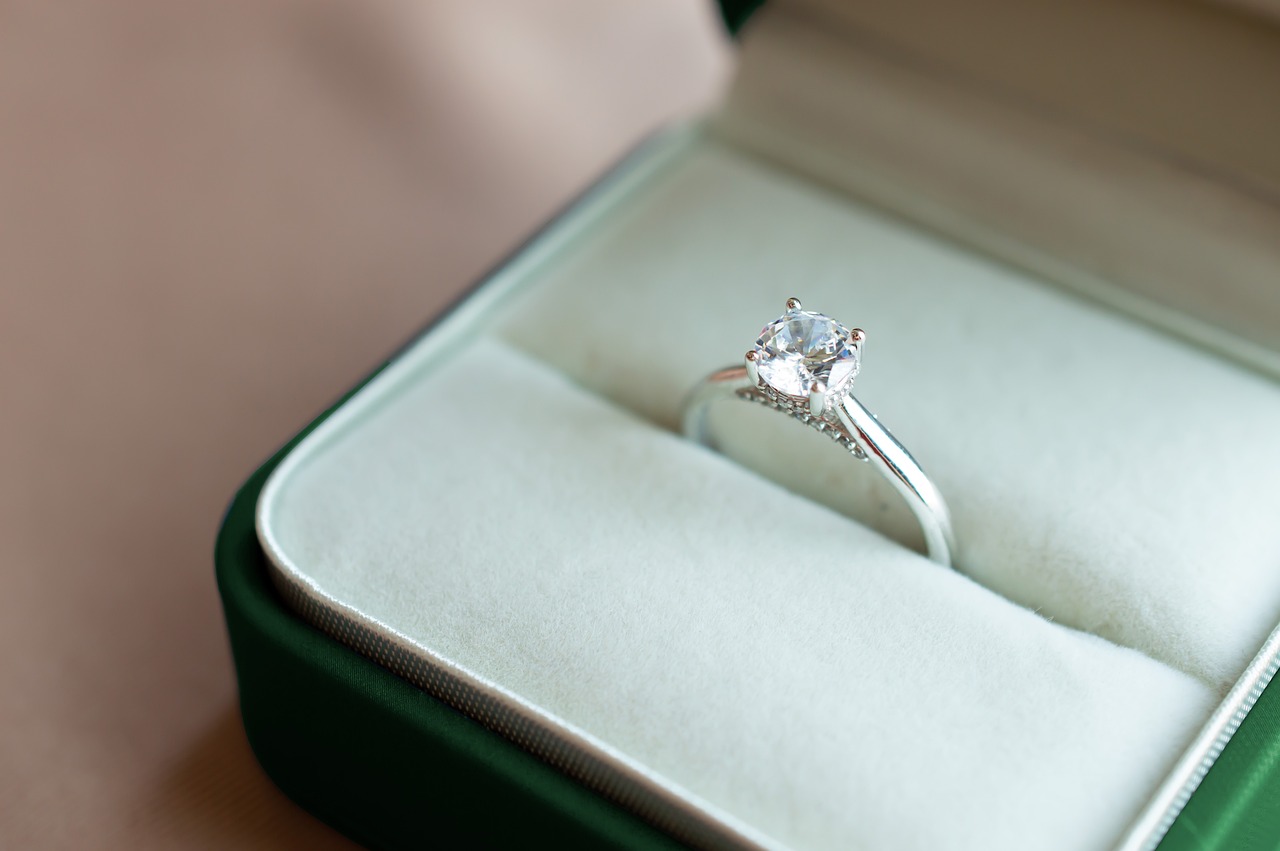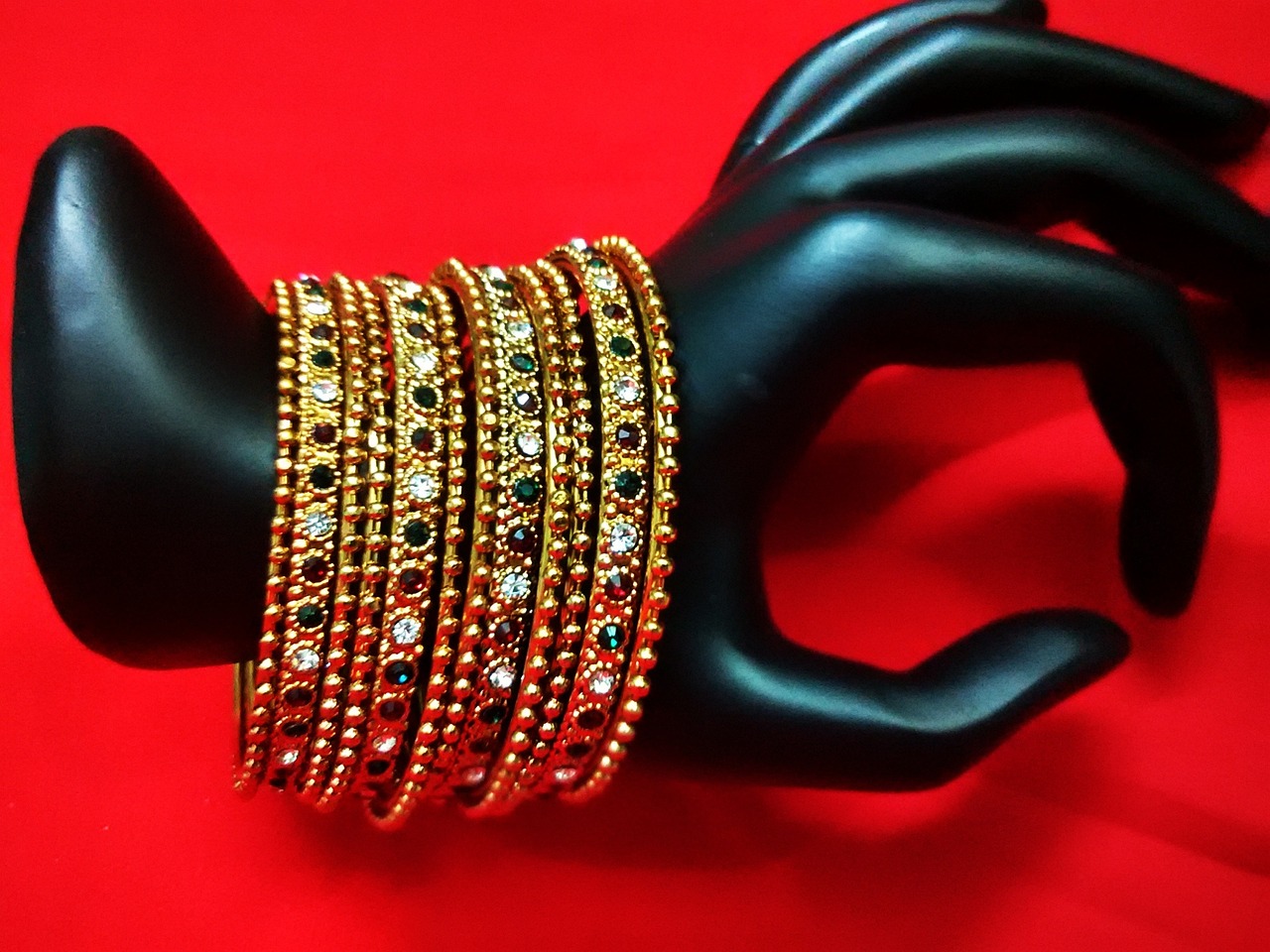This article explores essential factors to consider when purchasing pre-owned jewelry, ensuring buyers make informed decisions while enjoying the beauty and history of these pieces. The allure of pre-owned jewelry lies not only in its unique designs but also in the stories behind each item. Understanding what to look for can enhance your buying experience and ensure you make a valuable investment.
Why Choose Pre-Owned Jewelry?
Choosing pre-owned jewelry offers numerous advantages. Firstly, it provides access to unique styles that may no longer be in production. Secondly, it often comes at a lower price compared to new pieces, allowing you to acquire high-quality items without breaking the bank. Moreover, pre-owned pieces carry a sense of history and character that new jewelry simply cannot match.
How to Assess Jewelry Quality?
When assessing pre-owned jewelry, it’s crucial to evaluate its quality. Key factors include:
- Materials: Understand the types of metals and gemstones used.
- Craftsmanship: Look for signs of quality workmanship, such as intricate details and secure settings.
- Overall Condition: Check for any visible damage, wear, or repairs that may affect value.
What Materials Should You Look For?
Familiarizing yourself with different materials is essential. Gold and silver are popular choices, each with distinct qualities. Gold is known for its durability and timeless appeal, while silver offers a classic look with a more affordable price tag. Additionally, understanding gemstone quality—including clarity, cut, color, and carat weight—can significantly influence your purchasing decisions.
How to Verify Authenticity?
Ensuring the authenticity of pre-owned jewelry is vital. Familiarize yourself with common signs of fake pieces, such as:
- Missing hallmarks or stamps
- Unusual weight or appearance
- Lack of documentation or provenance
What to Ask the Seller?
Engaging with the seller can provide valuable insights. Consider asking:
- What is the history of the jewelry? Understanding its provenance can add to its charm.
- What is the return policy? A clear return policy can offer peace of mind.
How to Determine Fair Pricing?
Pricing in the pre-owned jewelry market can vary significantly. To ensure you’re getting a fair deal, research market trends and understand the demand for specific pieces. Additionally, consider obtaining a professional appraisal to gain an unbiased valuation of the jewelry.
Consider Appraisal Services
Getting a professional appraisal can be a wise decision. An expert can assess the jewelry’s value based on its materials, craftsmanship, and current market conditions. This step can provide clarity and confidence in your purchase.
What Are the Maintenance Tips for Pre-Owned Jewelry?
Caring for pre-owned jewelry is essential for preserving its beauty. Here are some practical tips:
- Regular Cleaning: Use a soft cloth to clean your jewelry and avoid harsh chemicals.
- Proper Storage: Store pieces separately to prevent scratches and tangling.
- Periodic Inspections: Check for loose stones or wear and take necessary actions promptly.
By following these guidelines, you can confidently navigate the world of pre-owned jewelry, ensuring that every piece you acquire is not only beautiful but also a wise investment.

Why Choose Pre-Owned Jewelry?
When considering a purchase, pre-owned jewelry offers a multitude of advantages that can significantly enhance your buying experience. Understanding these benefits not only helps you appreciate the jewelry’s aesthetic appeal but also allows you to make informed financial decisions.
One of the primary reasons to consider pre-owned jewelry is the unique styles that are often available. Unlike contemporary pieces, pre-owned jewelry can feature distinctive designs that reflect different eras and artistic movements. This uniqueness allows buyers to express their individuality and personal style in ways that mass-produced items cannot.
- Cost Savings: Pre-owned jewelry typically comes at a lower price point compared to new items. This can enable buyers to acquire high-quality pieces that may have been otherwise unaffordable.
- Environmental Sustainability: Purchasing pre-owned items contributes to sustainability by reducing the demand for new materials. This practice promotes a more eco-friendly lifestyle.
- Historical Value: Each piece of pre-owned jewelry carries its own story. Understanding the history behind a piece can add emotional value and significance to your purchase.
Furthermore, the investment potential of pre-owned jewelry should not be overlooked. Certain pieces, especially those from renowned designers or with rare gemstones, can appreciate over time. This makes them not only beautiful accessories but also wise financial investments.
When selecting pre-owned jewelry, evaluating the quality is crucial. Key factors include:
- Materials: Familiarize yourself with different metals and gemstones. Knowing the difference between 14k and 18k gold, or understanding the significance of clarity in diamonds, can help you make informed choices.
- Craftsmanship: Examine the craftsmanship of the piece. Well-crafted jewelry will show attention to detail and durability, enhancing its overall value.
- Condition: Inspect the jewelry for any signs of wear or damage. A piece in good condition will not only look better but will also require less maintenance over time.
Engaging with the seller can provide valuable insights into the jewelry’s history and condition. Here are some questions to consider:
- What is the history of the piece? Understanding its provenance can add to its charm and value.
- Is there a return policy? Knowing your options for returns or exchanges can provide peace of mind with your purchase.
Pricing can vary significantly in the pre-owned jewelry market. To ensure you are getting a fair deal, consider the following:
- Research Market Trends: Stay informed about current market trends to understand demand and pricing fluctuations.
- Consider Appraisal Services: Getting a professional appraisal can offer an unbiased valuation, ensuring you understand the true worth of the jewelry before finalizing your purchase.
In conclusion, choosing pre-owned jewelry can be a rewarding experience. By understanding the benefits, assessing quality, engaging with sellers, and determining fair pricing, you can make informed decisions that enhance your jewelry collection. Remember, each piece not only serves as an accessory but also as a cherished story waiting to be told.
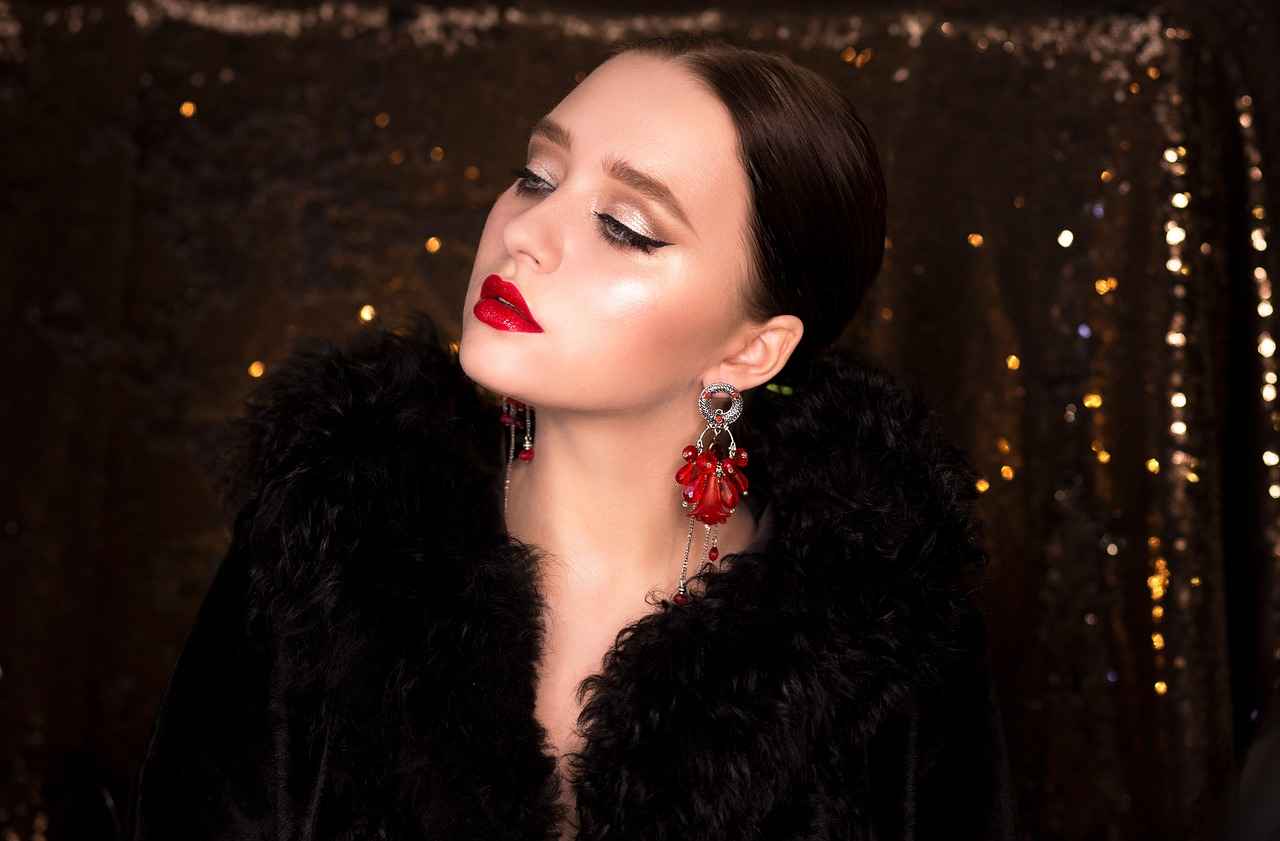
How to Assess Jewelry Quality?
When it comes to purchasing pre-owned jewelry, understanding how to assess its quality is essential for making a wise investment. The allure of vintage pieces is undeniable, but ensuring that you are selecting a piece that is both beautiful and durable requires careful evaluation. Here, we will delve into the critical factors that contribute to the quality of pre-owned jewelry, helping you make informed decisions.
To effectively assess the quality of pre-owned jewelry, you should consider several key factors:
- Materials: The type of materials used in jewelry significantly impacts its overall quality. Common materials include gold, silver, platinum, and various gemstones.
- Craftsmanship: The skill with which a piece is made can often be a telltale sign of its quality. Look for intricate details and well-finished edges.
- Overall Condition: Inspect the jewelry for any signs of wear or damage. A piece in excellent condition is more likely to retain its value.
The materials used in jewelry not only affect its aesthetic appeal but also its durability and value. Here’s a closer look at some common materials:
- Gold: Available in various karats, pure gold (24k) is the most malleable and ductile. However, many pieces are made with lower karats for increased strength.
- Silver: Sterling silver (92.5% silver) is the standard for quality silver jewelry. Check for markings like “925” to verify authenticity.
- Gemstones: The quality of gemstones is determined by the “Four Cs”: cut, color, clarity, and carat weight. Understanding these factors can help you assess a gemstone’s true value.
Craftsmanship can be evaluated by examining the following aspects:
- Design Complexity: Intricate designs often indicate a higher level of craftsmanship.
- Finishing: Check for smooth surfaces and polished finishes, which showcase attention to detail.
- Settings: Ensure that stones are securely set and that there are no loose components.
Before finalizing your purchase, thoroughly inspect the jewelry for:
- Signs of Wear: Look for scratches, dents, or discoloration that may affect the piece’s longevity.
- Repair History: Inquire about any previous repairs and whether they were done professionally.
- Authenticity Marks: Check for hallmarks or stamps that indicate the quality and authenticity of the materials.
For those uncertain about their assessment skills, seeking a professional appraisal can provide peace of mind. An expert can offer insights into the jewelry’s quality, authenticity, and fair market value, ensuring you make a sound investment.
In conclusion, assessing the quality of pre-owned jewelry involves a thorough examination of materials, craftsmanship, and overall condition. By paying attention to these factors, you can confidently choose pieces that not only enhance your collection but also serve as valuable investments.
What Materials Should You Look For?
When it comes to purchasing pre-owned jewelry, understanding the materials used is essential for determining quality and value. The jewelry market is saturated with various materials, each signifying different levels of craftsmanship and worth. This guide will help you navigate the complexities of materials, focusing on the most common types: gold, silver, and gemstones.
Gold is one of the most sought-after materials in jewelry due to its durability and timeless appeal. When assessing gold jewelry, look for the karat (K) marking, which indicates the purity of the gold. Common purities include:
- 10K – 41.7% gold
- 14K – 58.3% gold
- 18K – 75% gold
- 24K – 99.9% gold
Higher karat gold is generally more valuable, but it can also be softer and more prone to scratches. Additionally, consider the color of the gold, as it can range from yellow to white to rose, each offering a distinct aesthetic.
Silver is another popular choice, often seen as a more affordable alternative to gold. The most common type of silver used in jewelry is sterling silver, which is 92.5% silver and 7.5% alloy metals. When evaluating silver jewelry, look for the 925 stamp, indicating its sterling quality.
Keep in mind that silver can tarnish over time, so proper care and maintenance are crucial. Regular cleaning with a soft cloth and storing it in a dry, cool place can help preserve its shine.
Gemstones add a unique charm and character to jewelry. However, not all gemstones are created equal. When assessing the quality of gemstones, consider the Four Cs: cut, clarity, color, and carat weight.
- Cut: Refers to how well the gemstone has been shaped and faceted, affecting its brilliance.
- Clarity: Indicates the presence of inclusions or blemishes; fewer imperfections generally mean higher value.
- Color: The hue, saturation, and tone of the gemstone play a significant role in its desirability.
- Carat Weight: Larger gemstones are typically more valuable, but quality should not be compromised for size.
Familiarizing yourself with these characteristics will enable you to identify valuable gemstones and make informed purchasing decisions.
Many jewelry pieces incorporate a combination of gold, silver, and gemstones. When assessing such items, pay attention to the quality of each material. For instance, a gold ring adorned with high-quality gemstones can significantly increase its overall value.
In summary, understanding the materials used in jewelry is crucial for recognizing quality and value. By familiarizing yourself with gold, silver, and gemstones, you can confidently identify pieces that not only enhance your collection but also serve as wise investments.
Gold vs. Silver: Which is Better?
When it comes to choosing jewelry, gold and silver are two of the most popular metals available. Each has its own set of unique properties, aesthetic appeal, and market value. Understanding the differences between these two precious metals can significantly influence your buying decisions, helping you select a piece that resonates with your personal style and fits your budget.
Both gold and silver possess distinct characteristics that set them apart. For instance, gold is renowned for its durability and resistance to tarnish, making it an ideal choice for jewelry that is worn frequently. In contrast, silver, while equally beautiful, is more susceptible to tarnishing and requires regular maintenance to keep it looking its best.
From an investment perspective, gold has historically been viewed as a safe haven asset. Its value tends to remain stable or even increase during economic downturns. Silver, while valuable, often experiences more price volatility. Thus, if you are considering jewelry as an investment, gold may be the more prudent choice.
Another important consideration is the potential for skin reactions. Some individuals may be allergic to certain metals found in silver alloys, such as nickel. Gold, especially in its purest form (24K), is hypoallergenic. Therefore, if you have sensitive skin, you might prefer gold over silver.
In terms of design versatility, both metals offer a wide range of styles. Gold is often associated with luxury and elegance, making it a popular choice for formal occasions. Silver, on the other hand, tends to have a more casual and modern appeal, making it suitable for everyday wear. Your choice may depend on the specific occasion or your personal fashion sense.
When it comes to pricing, silver is generally more affordable than gold. This price difference can make silver an attractive option for those on a budget. However, investing in gold may offer better long-term value, especially if you plan to wear the piece frequently or pass it down through generations.
Ultimately, the decision between gold and silver should reflect your personal style and preferences. Consider the types of clothing you wear, your skin tone, and how often you plan to wear the jewelry. Gold tends to complement warmer skin tones, while silver often looks stunning on cooler skin tones.
In conclusion, both gold and silver have unique properties and values that cater to different tastes and budgets. By understanding their differences, you can make an informed decision that not only enhances your jewelry collection but also aligns with your lifestyle and investment goals. Whether you choose gold for its timeless elegance or silver for its modern appeal, each piece holds the potential to become a cherished part of your personal story.
Understanding Gemstone Quality
When it comes to purchasing pre-owned jewelry, understanding the quality of gemstones is essential. Gemstones are not only beautiful but also carry significant value, making it crucial for buyers to assess their worth accurately. This article will delve into the four main factors that determine gemstone quality: clarity, cut, color, and carat weight.
Clarity refers to the presence of inclusions or blemishes within a gemstone. Inclusions are internal features, while blemishes are external imperfections. The fewer inclusions and blemishes a gemstone has, the higher its clarity grade. For example, a diamond with high clarity is more valuable than one with visible flaws. Understanding clarity helps buyers appreciate the true quality of their gemstones.
The cut of a gemstone greatly influences its overall appearance and brilliance. A well-cut gemstone will reflect light beautifully, enhancing its visual appeal. Different cuts, such as round, princess, or emerald, can affect the stone’s value. A poorly cut gemstone may appear dull, regardless of its color or clarity. When evaluating pre-owned jewelry, pay attention to the cut to ensure you are investing in a high-quality piece.
Color is one of the most noticeable features of a gemstone and plays a significant role in determining its value. Each gemstone has a unique color range; for instance, sapphires can be found in various shades, but the most sought-after are deep blue. Factors such as hue, saturation, and tone contribute to the overall color quality. A vibrant, well-saturated color typically indicates a higher value, making it essential for buyers to understand the nuances of gemstone color.
Carat weight measures the size of a gemstone, with one carat equivalent to 200 milligrams. While larger gemstones are generally more valuable, the relationship between size and value is not linear. Factors such as clarity, cut, and color can significantly influence a gemstone’s worth, regardless of its carat weight. Understanding carat weight helps buyers gauge the size of gemstones in relation to their overall quality.
When evaluating pre-owned jewelry, consider the following steps:
- Examine the gemstone under different lighting conditions to assess its clarity and color.
- Check for certification or appraisal documents that verify the gemstone’s quality.
- Consult with a professional jeweler or gemologist for an expert opinion.
By understanding these key aspects of gemstone quality—clarity, cut, color, and carat weight—buyers can make informed decisions when purchasing pre-owned jewelry. This knowledge not only enhances the buying experience but also ensures that you are investing in pieces that hold their value over time.
How to Verify Authenticity?
When it comes to purchasing pre-owned jewelry, verifying authenticity is a critical step that every buyer must undertake. The allure of pre-owned pieces often lies in their unique history and character, but the risk of encountering counterfeit items can lead to significant financial loss and disappointment. Understanding how to effectively assess the authenticity of jewelry can empower buyers to make informed choices.
Ensuring the authenticity of pre-owned jewelry is vital for several reasons. First and foremost, it protects your investment. Authentic pieces typically hold their value better than replicas or fakes. Additionally, owning genuine jewelry adds a layer of credibility to your collection, enhancing its overall appeal. Lastly, knowing that your jewelry is authentic provides peace of mind, allowing you to enjoy your purchase without any lingering doubts.
There are several key indicators to examine when verifying the authenticity of pre-owned jewelry:
- Hallmarks and Stamps: Authentic jewelry often bears specific hallmarks or stamps that indicate the metal content or the manufacturer. Familiarize yourself with common stamps for gold, silver, and platinum, as these can help you quickly identify genuine items.
- Craftsmanship: Examine the overall craftsmanship of the piece. Authentic jewelry typically exhibits high-quality finishing, with no visible flaws or rough edges. Pay attention to details such as settings, clasps, and soldering.
- Gemstone Quality: If the piece features gemstones, assess their quality. Authentic gemstones should have consistent color and clarity, while fake stones may appear overly uniform or lack depth.
While personal inspection is essential, enlisting the help of professionals can provide an additional layer of assurance. Consider the following:
- Appraisal Services: A certified gemologist or appraiser can offer an expert opinion on the authenticity and value of the jewelry. Their knowledge and experience can help you avoid costly mistakes.
- Certification: Some jewelry comes with certificates of authenticity from reputable organizations. Always ask for any available documentation, as this can serve as a valuable reference point.
Engaging with the seller is crucial in verifying authenticity. Here are some important questions to consider:
- Can you provide proof of authenticity? Request any available paperwork or certificates that confirm the jewelry’s authenticity.
- What is the history of the piece? Understanding the jewelry’s provenance can provide insights into its authenticity and value.
Being aware of potential red flags can help you avoid counterfeit jewelry:
- Unusually Low Prices: If a deal seems too good to be true, it probably is. Authentic jewelry typically maintains a certain price range, so be cautious of steep discounts.
- Lack of Documentation: Reputable sellers should be able to provide documentation to support the authenticity of their pieces. If they cannot, consider it a warning sign.
By following these guidelines, you can significantly reduce the risk of purchasing counterfeit jewelry. Ensuring authenticity is not just about protecting your investment; it enhances your overall enjoyment of the jewelry, allowing you to cherish its beauty and history with confidence.

What to Ask the Seller?
When considering a purchase of pre-owned jewelry, engaging with the seller is a crucial step that can significantly influence your buying experience. By asking the right questions, you can uncover valuable insights that may not be immediately apparent. This interaction not only builds trust but also equips you with the necessary information to make an informed decision.
Engaging with the seller can provide valuable insights into the piece you are interested in. Sellers often have a wealth of knowledge about the jewelry’s history, including its previous ownership, the circumstances under which it was made, and any unique stories attached to it. This information can enhance your appreciation for the piece and help you understand its true value.
- What is the history of this piece? Understanding the provenance can add to the charm and significance of the jewelry.
- Can you provide details about its condition? Ask the seller about any repairs or alterations that have been made, as this can affect the piece’s value.
- Is there any documentation available? Certificates of authenticity or previous appraisals can serve as proof of the jewelry’s value and quality.
- What materials were used in its creation? Knowing whether the jewelry is made from precious metals or high-quality gemstones can help you assess its worth.
- What is your return policy? A clear return policy can offer peace of mind, allowing you to return the piece if it does not meet your expectations.
It’s essential to inquire about the condition of the jewelry. Sellers should be transparent about any flaws, such as scratches or missing stones. Understanding the current state of the piece will help you gauge whether it requires repairs or restoration, which can impact your overall investment.
Asking about the jewelry’s provenance can reveal fascinating stories that enhance its value. For instance, if the piece once belonged to a notable figure or has a historical significance, it may carry a higher price tag. This context can also deepen your emotional connection to the jewelry.
While engaging with the seller, it’s also important to evaluate their credibility. Inquire about their experience in the jewelry market and check for any reviews or testimonials from previous customers. A reputable seller is likely to be more knowledgeable and willing to provide comprehensive answers to your questions.
Engaging with the seller is not just about gathering information; it’s about establishing a relationship built on trust and transparency. By asking the right questions and actively listening to the seller’s responses, you can gain insights that will empower you to make a well-informed decision. Remember, the more you know about the jewelry and its background, the more confident you will feel in your purchase.
Inquire About the Jewelry’s History
When it comes to purchasing pre-owned jewelry, one of the most intriguing aspects is the jewelry’s history. Understanding the provenance of a piece can significantly enhance its charm and value. The story behind a piece of jewelry often adds layers of meaning that go beyond its aesthetic appeal or material worth. Knowing its previous ownership can deepen your appreciation for the craftsmanship and artistry involved in its creation.
Jewelry often carries the memories and emotions of its previous owners, making it a unique treasure. For instance, a ring that was once a cherished family heirloom may symbolize love and connection, while a vintage piece may reflect the fashion trends of a bygone era. This history can create a personal connection, making the jewelry not just an accessory, but a part of your own story.
The provenance of jewelry can reveal its authenticity and significance. A well-documented history can provide assurance that the piece is genuine and not a mere imitation. Additionally, pieces with notable histories often appreciate in value over time. Collectors and enthusiasts are frequently drawn to items that have a story to tell, making them more desirable in the market.
- Who was the previous owner? Understanding the background of the previous owner can add a personal touch to the piece.
- What is the age of the jewelry? Knowing how old the piece is can give insights into its style and craftsmanship.
- Is there any documentation available? Certificates, appraisals, or receipts can help verify the authenticity and provenance of the jewelry.
- Has the piece been restored or altered? Knowing any modifications can affect the piece’s value and historical significance.
As mentioned earlier, the history of a jewelry piece can significantly influence its market value. Items with a rich provenance, such as those once owned by celebrities or historical figures, can command higher prices. Collectors often seek out pieces with interesting backstories, as they not only serve as beautiful adornments but also as conversation starters. In contrast, pieces without a documented history may be valued less, regardless of their aesthetic appeal.
To gather information about a jewelry piece’s history, consider the following avenues:
- Ask the Seller: Engaging in a conversation with the seller can yield valuable insights about the piece’s past.
- Research Online: Many online platforms and forums focus on vintage and antique jewelry, where you can find discussions about specific pieces.
- Consult Experts: Professional appraisers or jewelers may have the expertise to provide historical context and valuation based on the piece’s characteristics.
In conclusion, exploring the history of pre-owned jewelry is not just a matter of curiosity; it is an essential aspect of the buying process. The more you learn about a piece’s provenance, the more informed your purchasing decision will be. By asking the right questions and seeking out detailed information, you can ensure that your jewelry is not only a beautiful addition to your collection but also a meaningful one.
Question the Return Policy
When purchasing pre-owned jewelry, one of the most critical aspects to consider is the return policy. A well-defined return policy not only protects your investment but also enhances your overall shopping experience. Understanding your rights and options for returns or exchanges can provide you with the peace of mind needed when making such a significant purchase.
A clear return policy is essential for several reasons:
- Protection Against Defects: Pre-owned jewelry may have hidden flaws or damage that are not immediately apparent. A good return policy allows you to return or exchange the item if it does not meet your expectations.
- Buyer Confidence: Knowing that you can return the jewelry if it doesn’t suit your taste or expectations encourages you to make a purchase without hesitation.
- Flexibility: Life can be unpredictable. Having the option to return or exchange a piece of jewelry gives you the flexibility to make decisions that best fit your situation.
When reviewing a seller’s return policy, consider the following factors:
- Time Frame: Check how long you have to return the item. A longer return window is generally more favorable.
- Condition Requirements: Understand the condition in which the jewelry must be returned. Some sellers may require the item to be in its original packaging or unworn.
- Restocking Fees: Some sellers charge a restocking fee for returns. Be sure to clarify this to avoid unexpected costs.
- Exchange Options: Inquire whether you can exchange the item for another piece rather than receiving a refund.
Engaging in a conversation with the seller about the return policy can provide clarity. Here are some tips:
- Ask Direct Questions: Don’t hesitate to ask specific questions about the return process, such as, “What is your return policy?” or “Are there any conditions I should be aware of?”
- Request Written Confirmation: If possible, ask for the return policy in writing. This can serve as a reference in case of any disputes.
- Clarify Any Ambiguities: If any part of the return policy seems unclear, seek clarification. Understanding every detail can save you from future complications.
If you find yourself in a situation where you need to return a piece of pre-owned jewelry, follow these steps:
1. Review the return policy you received at the time of purchase.2. Gather all original packaging and documentation.3. Contact the seller to initiate the return process.4. Follow the seller's instructions carefully to ensure a smooth return.5. Keep records of your return shipment for your protection.
In conclusion, a clear and comprehensive return policy is a vital component of purchasing pre-owned jewelry. By understanding your rights and engaging with the seller, you can ensure a positive buying experience. Always prioritize your peace of mind and make informed decisions when investing in beautiful, pre-owned pieces.

How to Determine Fair Pricing?
When it comes to purchasing pre-owned jewelry, understanding how to determine fair pricing is essential. The pre-owned jewelry market can be a treasure trove of unique pieces, but prices can vary widely. This guide will help you navigate through the pricing landscape, ensuring you make informed choices without overspending.
The first step in assessing fair pricing is to recognize that prices can fluctuate based on several factors. Market demand, condition, and brand reputation all play significant roles. For instance, a well-known brand may command higher prices due to its established reputation, while lesser-known pieces may be more affordable.
One effective way to gauge fair pricing is by researching comparable sales. Look for similar items on various platforms, such as online marketplaces, auction sites, and local jewelers. This research will provide a benchmark for what similar pieces are selling for, helping you spot any pricing discrepancies.
Another valuable resource is a professional appraisal. Engaging a certified appraiser can provide you with an unbiased assessment of the jewelry’s value. Appraisers consider factors such as material quality, craftsmanship, and market trends when determining worth. This step is particularly crucial for high-value items, where even minor differences in quality can significantly impact pricing.
The condition of the jewelry is paramount in determining its price. Carefully inspect the piece for any signs of wear or damage. Look for scratches, chips, or loose stones. A piece in excellent condition will typically be priced higher than one that requires repairs. Don’t hesitate to ask the seller about any maintenance history or repairs that have been made.
The seller’s motivation can also influence pricing. If they are looking to sell quickly, they may offer a more competitive price. Conversely, if they are not in a rush, they might set a higher price. Engaging the seller in conversation can provide insights into their pricing strategy and help you negotiate better.
Staying informed about current market trends can give you an edge when determining fair pricing. Seasonal trends, economic factors, and even social media can influence demand and pricing. For example, certain styles may become trendy, driving prices up, while others may fall out of favor, leading to lower prices. Keeping an eye on these trends can help you make smarter purchasing decisions.
Once you have gathered all the necessary information, don’t shy away from negotiating. Sellers often expect some back-and-forth discussion regarding price. Use your research as leverage to present a fair offer based on your findings. Highlight any flaws or concerns you noted during your inspection to justify your proposed price.
Leverage online resources to stay updated on pricing trends. Websites that specialize in jewelry sales can provide valuable insights into current market prices. Additionally, forums and community groups focused on jewelry can offer advice and shared experiences from other buyers, enhancing your understanding of fair pricing.
In conclusion, determining fair pricing in the pre-owned jewelry market requires a combination of research, evaluation, and negotiation skills. By understanding market variability, researching comparable sales, consulting professionals, and staying informed about trends, you can confidently navigate the buying process and secure a piece that is both beautiful and fairly priced.
Research Market Trends
Understanding the intricacies of the pre-owned jewelry market can significantly enhance your purchasing experience. One of the most vital aspects to consider is how to . By staying informed, you can make smarter decisions, ensuring that you get the best value for your investment.
Researching market trends is essential for several reasons. It allows you to identify demand for specific types of jewelry, which can fluctuate based on fashion, celebrity influence, and economic conditions. This knowledge can empower you to negotiate better deals and avoid overpaying for items that may not hold their value.
To effectively track pricing fluctuations, consider the following strategies:
- Online Marketplaces: Websites like eBay, Etsy, and specialized jewelry platforms can provide insights into current selling prices.
- Social Media: Follow jewelry influencers and brands on platforms like Instagram to see trending styles and their associated prices.
- Industry Reports: Subscribe to jewelry industry publications or reports that analyze market trends and pricing.
Looking at historical data can also be beneficial. By analyzing past sales trends, you can identify patterns that may inform your purchasing decisions. For instance, if certain styles have consistently increased in value over time, it may be wise to invest in those pieces.
Engaging with industry experts can provide you with invaluable insights. Attend jewelry shows, auctions, or local gem fairs to connect with professionals who can share their knowledge about current trends and pricing.
Jewelry trends can be seasonal. For example, certain styles may become popular during the holiday season or summer weddings. Knowing when to buy can help you take advantage of lower prices during off-peak times.
Armed with your research, you can approach negotiations with confidence. Here are some effective tactics:
- Present Your Findings: Share your research with the seller to justify your offer. This demonstrates that you are an informed buyer.
- Be Patient: Don’t rush into a purchase. If the seller is unwilling to negotiate, consider walking away. This can sometimes prompt them to reconsider your offer.
- Offer to Compromise: If the seller is firm on their price, see if they are willing to include additional services, such as cleaning or appraisal, to sweeten the deal.
In today’s digital age, technology can be a powerful ally in your research. Utilize apps and websites that track jewelry prices and trends. Some tools even provide alerts when prices drop on specific items you are interested in.
In summary, staying informed about current market trends is crucial for anyone looking to invest in pre-owned jewelry. By understanding demand and pricing fluctuations, you can negotiate better deals and make informed decisions that will enhance your collection.
Consider Appraisal Services
When delving into the world of pre-owned jewelry, one crucial aspect that cannot be overlooked is the importance of obtaining a professional appraisal. Understanding the value of your jewelry is essential for making informed purchasing decisions, and an unbiased valuation can provide clarity on what you are about to invest in.
A professional appraisal serves as an independent evaluation of the jewelry’s worth. This step is not merely a formality; it is a vital process that can protect you from overpaying or making a poor investment. An expert appraiser will consider various factors, including the quality of materials, craftsmanship, and market demand, to arrive at a fair value.
- Materials Used: The type and quality of metals and gemstones are crucial. For instance, high-quality diamonds or rare gemstones can significantly increase a piece’s value.
- Craftsmanship: The skill involved in creating the jewelry affects its worth. Handcrafted pieces often carry a premium compared to mass-produced items.
- Market Trends: Appraisers stay updated on market fluctuations and trends, which can influence how much a piece is worth at any given time.
Selecting a qualified appraiser is essential for obtaining an accurate valuation. Here are some tips:
- Look for Credentials: Ensure the appraiser is certified by a recognized organization, such as the American Society of Appraisers (ASA) or the National Association of Jewelry Appraisers (NAJA).
- Check Reviews: Research online reviews and testimonials from previous clients to gauge the appraiser’s reputation.
- Ask About Experience: An appraiser with extensive experience in the jewelry market will likely provide a more accurate evaluation.
During the appraisal, you can expect the appraiser to examine the piece thoroughly. They will assess its condition, check for any markings or stamps that indicate authenticity, and evaluate the overall craftsmanship. This process may take some time, but it is essential for obtaining a detailed report that outlines the jewelry’s value.
Having an appraisal can provide peace of mind. Knowing the true worth of your jewelry allows you to:
- Make Informed Decisions: Whether you are buying or selling, understanding the value helps you negotiate better.
- Insure Your Jewelry: An appraisal is often required for insurance purposes, ensuring that you are adequately covered in case of loss or damage.
- Enhance Resale Value: An appraisal can help you justify your asking price when selling the piece in the future.
In conclusion, engaging a professional appraiser is a critical step when purchasing pre-owned jewelry. This process not only ensures you understand the true worth of your investment but also provides essential insights that can enhance your overall purchasing experience. By considering appraisal services, you can navigate the pre-owned jewelry market with confidence and make decisions that align with your personal style and financial goals.
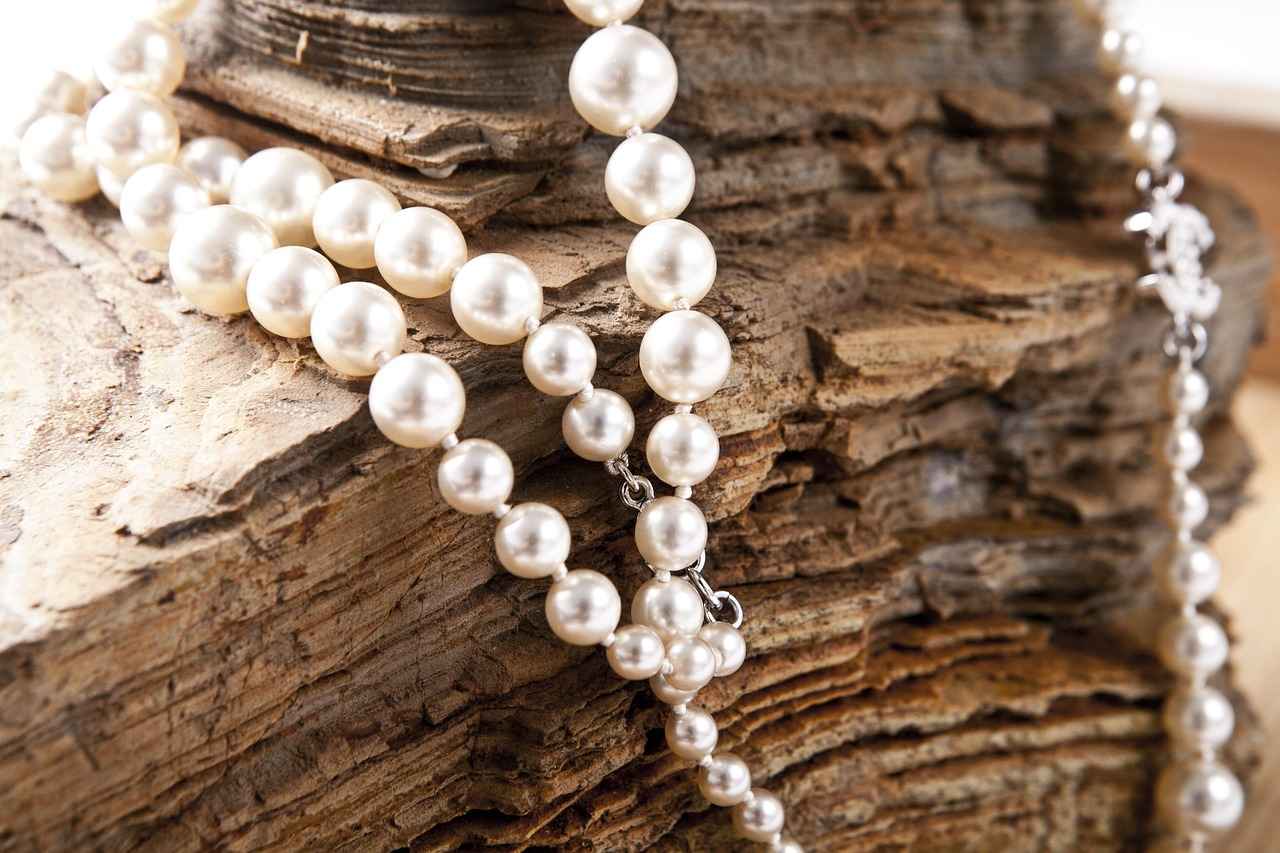
What Are the Maintenance Tips for Pre-Owned Jewelry?
Caring for pre-owned jewelry is essential for preserving its beauty and ensuring its longevity. These pieces often carry a rich history, and with the right maintenance practices, you can keep them looking stunning for years to come. In this section, we will explore effective maintenance tips that every jewelry owner should know.
Regular cleaning is crucial in maintaining the shine and luster of your jewelry. Dust, dirt, and oils from your skin can accumulate over time, dulling the appearance of your pieces. To clean your jewelry:
- Use a soft, lint-free cloth to gently wipe the surface.
- For deeper cleaning, create a solution of warm water and mild soap.
- Soak your jewelry for a few minutes, then use a soft brush to remove any grime.
- Rinse thoroughly and dry with a soft cloth.
Proper storage is vital to prevent scratches and tangling. Consider the following tips for storing your pre-owned jewelry:
- Store pieces separately in soft pouches or lined jewelry boxes.
- Avoid keeping jewelry in direct sunlight or humid areas.
- Use anti-tarnish strips for silver pieces to prevent tarnishing.
When wearing and handling your jewelry, it’s important to take precautions to ensure its safety:
- Remove jewelry before engaging in activities that may cause damage, such as exercising or swimming.
- Avoid exposing your jewelry to harsh chemicals, including household cleaners and perfumes.
- Be cautious when putting on or taking off jewelry to prevent accidental damage.
While regular care is important, some pieces may require professional attention. Consider the following:
- Take your jewelry to a professional jeweler for an annual inspection.
- Have loose stones reset and clasps checked for security.
- Consider professional cleaning services for intricate designs.
Each type of jewelry material has its own maintenance requirements:
- Gold: Regular polishing can help maintain its shine.
- Silver: Requires more frequent cleaning to prevent tarnish.
- Gemstones: Be cautious with softer stones; they may need special care.
By following these maintenance tips, you can ensure that your pre-owned jewelry remains a cherished part of your collection for years to come. Remember, the key to preserving the beauty of your pieces lies in regular care and attention.
Frequently Asked Questions
- What should I look for when buying pre-owned jewelry?
When buying pre-owned jewelry, focus on the quality of materials, craftsmanship, and overall condition. It’s essential to assess the authenticity and ask the seller about the piece’s history to ensure you’re making a wise investment.
- How can I verify the authenticity of pre-owned jewelry?
To verify authenticity, check for hallmarks, certificates, or appraisals. Familiarize yourself with common signs of fakes, and don’t hesitate to ask the seller for proof of authenticity. Doing your homework can save you from potential scams!
- What are the benefits of choosing pre-owned jewelry?
Pre-owned jewelry often features unique designs that you won’t find in new pieces. Plus, it can be more affordable, allowing you to acquire high-quality items without breaking the bank. It’s like finding a hidden treasure!
- How do I determine a fair price for pre-owned jewelry?
Research market trends and compare prices for similar pieces to gauge fair value. Getting an appraisal can also help you understand the jewelry’s worth, ensuring you don’t overpay for your stunning find.
- What maintenance tips should I follow for pre-owned jewelry?
To keep your pre-owned jewelry looking its best, clean it regularly with a soft cloth and store it properly to avoid scratches. Consider occasional professional cleaning to maintain its shine and integrity!
